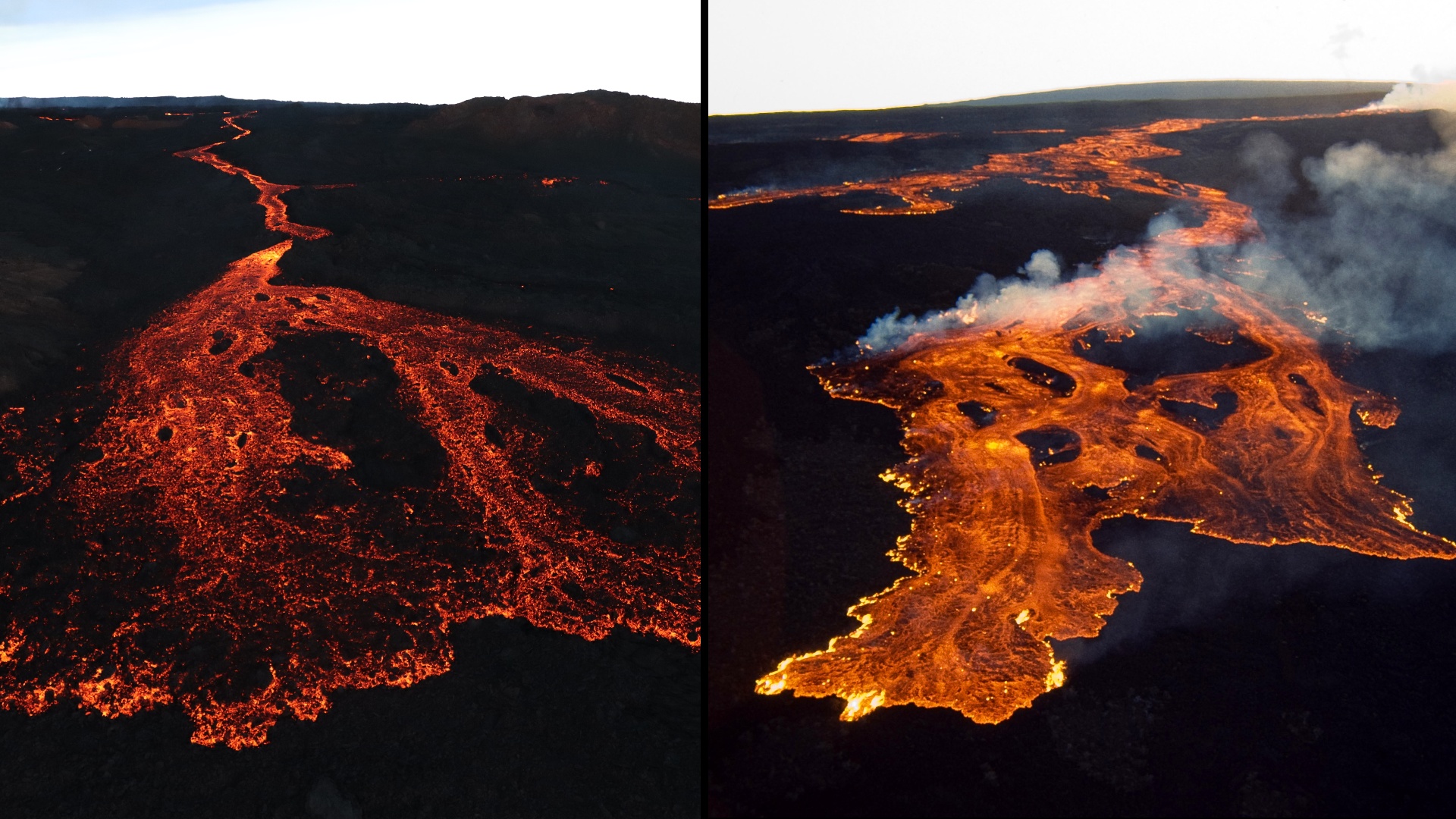(BIVN) – Mauna Loa is not erupting. Seismicity remains low, and webcams show no signs of activity. The USGS Volcano Alert Level is at ADVISORY.
Mauna Loa is the topic of this week’s Volcano Watch article, written by U.S. Geological Survey Hawaiian Volcano Observatory scientists and affiliates:
Mauna Loa’s recent eruption is still fresh in the minds of Hawaiian Volcano Observatory (HVO) scientists and Island of Hawai‘i residents. Now is a good time to reflect on this event, especially in comparison to the one 38 years before it.
Despite the development of new volcano monitoring techniques, decades between the eruptions meant there were many uncertainties leading to the recent eruption. Did the unrest observed during the fall of 2022 mean an eruption would certainly occur? How soon would modern monitoring signals show signs of an imminent eruption?
At the same time, 33 previously observed Mauna Loa eruptions have demonstrated certain patterns that HVO could be confident the volcano would follow if it erupted again. Patterns like all previous eruptions began in the summit caldera. Additionally, half of those eruptions stayed in the summit and half migrated to a rift zone or radial vent. If the eruption migrated out of the summit, where would it go? The answer to that question wouldn’t become evident until it happened. A Southwest Rift Zone (SWRZ) eruption could impact infrastructure within hours; a Northeast Rift Zone (NERZ) eruption would take days, weeks, months to impact infrastructure downslope.
Throughout the fall of 2022, as Mauna Loa became more active, HVO worked closely with the County of Hawai‘i Civil Defense Agency (HCCDA) to educate the island residents. We held community meetings, gave media interviews, published “Volcano Watch” articles, official notices, and social media posts about the uncertainties and certainties of a Mauna Loa eruption. We encouraged kamaʻāina living or working on the flanks of Mauna Loa to prepare for the possibility of an eruption. And as unrest continued, the Hawai‘i Volcanoes National Park closed Mauna Loa’s backcountry to hikers on October 5.
When the eruption began, on the night of November 27, events unfolded similarly to the 1984 eruption. Seismic signals indicating an impending eruption occurred less than an hour in advance of each eruption. Both eruptions occurred in the middle of the night, waking scientists and residents from their slumber.
In 1984 and 2022, bright glow, from fountains within Moku‘āweoweo, was visible around the island. Word of the eruption spread quickly—in 1984, via the coconut wireless and, in 2022, via social media.
In 2022, some residents living near the SWRZ chose to self-evacuate in case the eruption migrated there. Fortunately, both the 1984 and 2022 eruptions migrated within hours from the summit to the NERZ.
Weather sometimes prevented HVO crews from making observations during both eruptions; however, technological advancements since 1984 allowed HVO to provide remote views of the 2022 eruption in near real-time. Furthermore, HVO deployed webcams and a livestream video that were available to the public.
Modern technology allowed HVO to share, in near real time, accurate 2022 flow maps, derived from satellite imagery and overflights, with HCCDA, our partners, and the public. Lava flow models used digital elevation models to evaluate lava flow paths and potential impacts. This information was shared during daily press briefings in 2022, a communication strategy that was also used during 1984 eruption.
These observations, and others, were summarized at the International Association for the Volcanology of Earth’s Interior scientific assembly meeting that takes place every four years. This year, the meeting occurred in Rotorua, New Zealand, where HVO staff were invited to present talks on the recent eruption.
Presentations described the buildup to the eruption, the magma system, flow mapping and modeling, and interagency coordination and messaging.
How do these eruptions compare physically? In 1984, about 58 billion gallons were erupted and covered an area of 11,860 acres. The 2022 eruption produced almost 40 billion gallons and covered an area of 8,900 acres. The volume and area covered was close to the average and median values for all historical NERZ eruptions. While it was spectacular, the 2022 eruption was ordinary.
Fortunately, these two eruptions have not greatly impacted infrastructure on the Island of Hawai‘i, but future eruptions at some point will. HVO appreciates our community awareness and preparedness for eruptions, which are part of the dynamic and beautiful landscape of Hawai‘i nei.


by Big Island Video News6:34 am
on at
STORY SUMMARY
HAWAIʻI VOLCANOES NATIONAL PARK - Scientists are reflecting on the most recent eruption of Mauna Loa as compared to eruption of 1984.